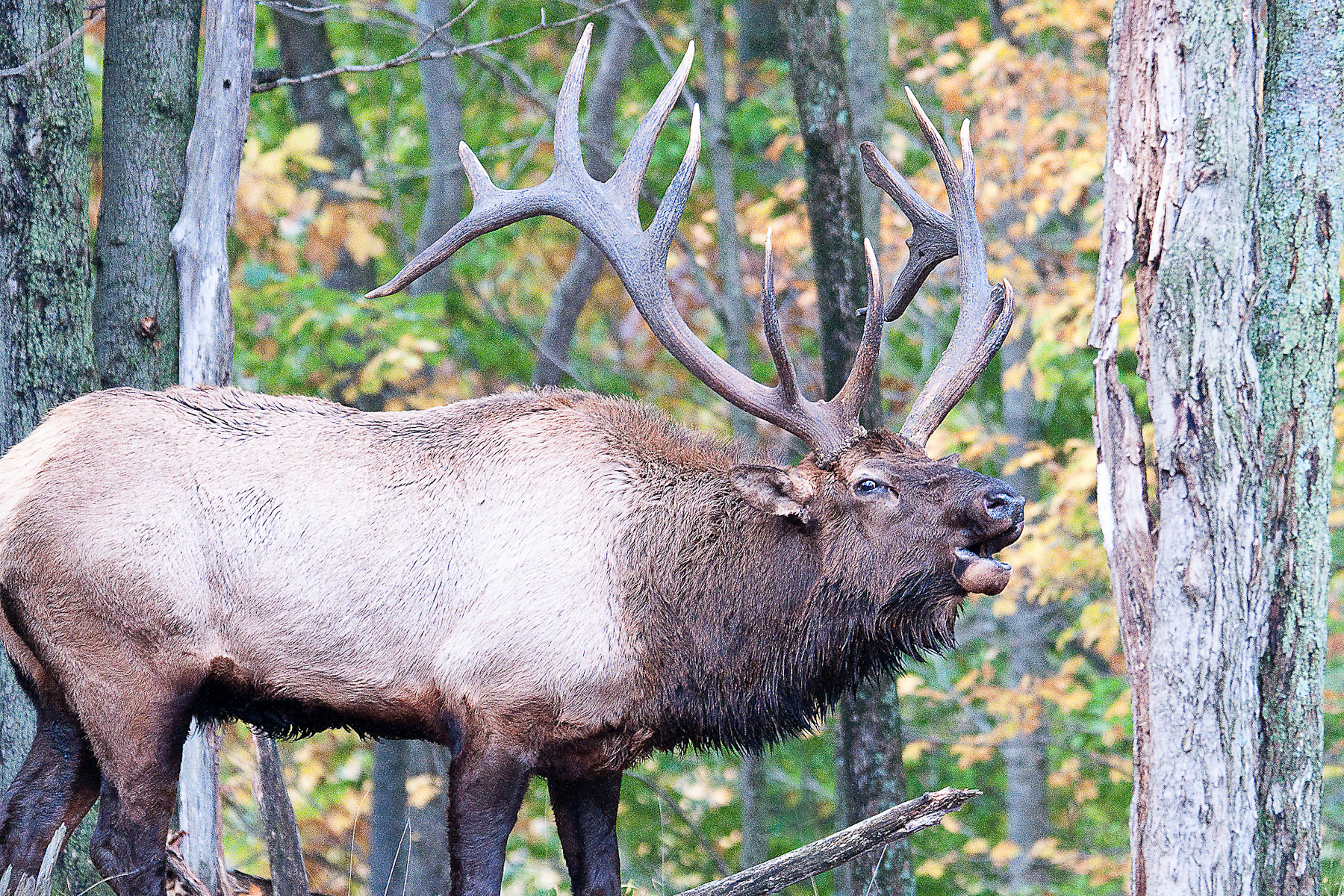Appalachia has a lot of abandoned mine lands. And figuring out what to do with that land, which is often burdened with a legacy of pollution, is complicated. But in West Virginia, the Conservation Fund—a nationwide conservation group—has a plan to use some of those lands to bring wild elk back to the region. And supporters say it’s not just about ecology. It’s also good economics. Recently, the Allegheny Front’s Kara Holsopple caught up with Joe Hankins, vice president of the Conservation Fund, to talk about the project.
Allegheny Front: So why are elk being brought back to West Virginia?
Joe Hankins: The elk is something that hasn’t been seen in the state of West Virginia since the Civil War. Elk were native to the eastern United States and is something that we’d love to have back in the state. But elk have also proven to be a wonderful economic development opportunity. In Pennsylvania, Kentucky, Tennessee and Virginia, elk have been reintroduced—bringing folks to parts of those states that they wouldn’t normally see. The economic ripple effect of elk in Pennsylvania is $25 to 40 million dollars a year. So this is a species that is charismatic, it’s a destination. So along with those visitations come other expenditures—hotels, restaurants, binoculars, you name it. So the effect of this kind of species could be quite significant to the southern part of the state.
AF: What does the land look like where the elk are going to be introduced?
JH: Much of this area has been underground mined for a century and now has been mountaintop removal mined. So there are reclaimed mine sites that are 10 or 20 years into reclamation. There are a few spots that are still actively mined. And what you can see, if you look on Google Maps, is that much of this area is forested, with these patches of mountaintop removal. So it’s not a complete moonscape, but it’s certainly in recovery. It’s grassland, it’s scrub that is really perfect for elk. But it’s a project that will take some time. It’s a fixer-upper.
AF: And the land will be used for more than just elk, right?
JH: Well, that’s really the beauty of it. The elk is clearly what has attracted people’s attention, but the elk habitat aligns with lots of other interesting economic and environmental activities. From an economic standpoint, we will endeavor to maintain these parcels as working forests, so they’ll continue to generate timber revenue, so that the natural resource base is sustained. But from an ecological standpoint, there are lots of other species that like the grasslands. I was down on the sites in October and just watched a steady stream of monarch butterflies, flying along a ridgeline, heading south. So Mother Nature has not forgotten about these sites, and with a little help from skilled biologists, they can be turned into habitat for the benefit of lots of species.
LISTEN: “Wild Elk are Heading Back to West Virginia”
AF: Could this type of restoration be replicated elsewhere on abandoned mine lands?
JH: The answer is, yes, we think this is a model that works. But for us, it’s almost a different question. You know, we do conservation work across the country in special places, protecting scenic vistas and other ecologies. But can the tools of conservation be used to protect and conserve those properties that folks might not have instantly recognized as something that needs to be protected and has a future value?
We had an interesting conversation with Earl Gohl, the Appalachian Regional Commission Federal Co-Chair. He says Appalachia is the next great investment in America. And we really believe that. So while others are pulling out of Appalachia, pulling out of the coal fields, or questioning what the economic and environmental future is, we’re there. West Virginia is a special place. It’s almost the backyard of the East Coast. It’s a place you can go and still see the stars on a dark night. It’s a place that you can go and have authentic conversations and [experience] huge amounts of cultural and industrial history that many of us don’t know about. But if you plug in your phone, you’ve been connected to the coal fields. So you have a reason to understand what’s happening.
###
Note: The Conservation Fund purchased the land mentioned in this story through their Working Forest Fund with support from the Richard King Mellon Foundation. The Richard King Mellon Fundation also provides support for the The Allegheny Front’s conservation coverage.

